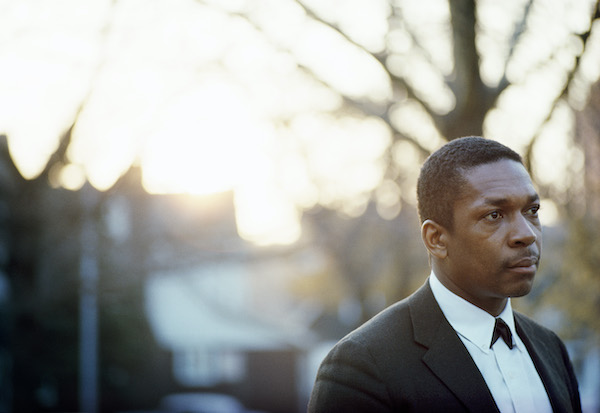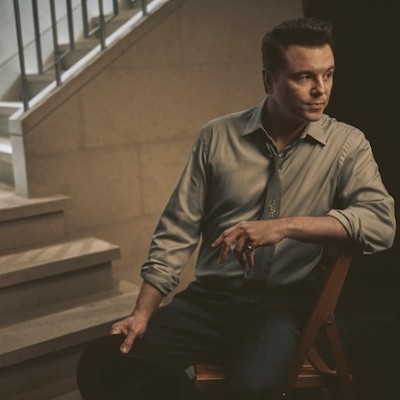Dec 9, 2025 12:28 PM
In Memoriam: Gordon Goodwin, 1954–2025
Gordon Goodwin, an award-winning saxophonist, pianist, bandleader, composer and arranger, died Dec. 8 in Los Angeles.…

John Coltrane’s Blue World takes its name from a contrafact of Harold Arlen’s “Out Of This World.”
(Photo: Jim Marshall)In late June of 1964, in between Impulse Records studio dates for Crescent and A Love Supreme, saxophonist John Coltrane brought his classic quartet with pianist McCoy Tyner, bassist Jimmy Garrison and drummer Elvin Jones to Rudy Van Gelder’s New Jersey studio to lay down a handful of abbreviated tracks. Recorded outside of the label’s purview, these off-trail tapes remained shrouded in near obscurity until September 2019, when Impulse released Blue World, the output from that day’s session.
Intriguing for its provenance, this short collection snags Best Historical Album in this year’s Readers Poll. The ranking begs comparison with last year’s win in the Historical Album category, Both Directions At Once: The Lost Album—another belated Coltrane release from the Impulse label.
Certainly, these two recordings share commonalities: Both were recorded within 15 months of each other at the same place, with the same personnel, at a momentous crossroads in Coltrane’s creative life. But the circumstances of their respective discoveries suggest the differing intents behind these recordings: The raw tracks that became Both Directions At Once remained in Coltrane’s family, while the session takes for Blue World landed in an archive at the National Film Board of Canada.
Coltrane had taped Blue World’s eight tracks—variations on four of his oft-played originals in multiple takes and his contrafact of Harold Arlen’s “Out Of This World”—at the behest of Canadian filmmaker Gilles Groulx. The Québec auteur was finishing up what would become a ground-breaking film in Canada, Le chat dans le sac (The Cat In The Bag), and wanted the restless sounds of Coltrane’s horn for the city scenes. It would be the only soundtrack that Coltrane ever would record.
How one hears this release depends in large part on their vantage point. For rising star saxophonist Lakecia Benjamin—who earlier this year released Pursuance: The Coltranes, a tribute to the saxophonist and Alice Coltrane—there’s no such thing as an inconsequential Coltrane recording.
“Whenever you get a chance to [hear the alternate takes,] it’s eye-opening because you can see what the musician actually planned, versus what they improvised,” she said. “Musicians don’t alter their game plan, they just play off of it.”
At first listen, she thought that Coltrane had recorded Blue World with an earlier incarnation of his quartet—the album’s repertoire was made up of tunes that the bandleader largely had moved away from by the time of the 1964 session. Stylistically, though, these tracks were of a different order.
“You can hear that they’re already in the thick of the Love Supreme-era,” Benjamin continued. “It’s so interesting to hear Coltrane as he’s growing into a new sound, and how those old songs took on a new life. ... If you listen to ‘Naima’ on Giant Steps and in other earlier versions, they sound more like a film score there than on [Blue World]. But on this album, they’re imposing the three over the four, and the modes are opened up. Even when they play [‘Village Blues’], they’re reaching in the same way that they do on their usual classic albums.”
But esteemed jazz critic and Coltrane biographer Ben Ratliff reserves judgment on the album’s contribution to our understanding of Coltrane’s legacy.
“I’d rather hear the Coltrane Quartet between 1961 and 1965 than most bands, no matter what they were doing or why, and I didn’t learn much new from Blue World,” Ratliff, whose Coltrane: The Story of a Sound was released in 2007, explained. “That could be because this is music created to be secondary to someone else’s audio-visual view of life, or for some other reason. But my feeling was that there are more centered, dynamic and profound studio versions of these pieces elsewhere.”
Still, it’s hard to resist Coltrane, even on a less notable day than usual.
“I did like the sound, though,” Ratliff went on. “All the dry, sharp detail of the rhythm section, and the explosiveness of Elvin Jones’ drum sound at the end of ‘Blue World.’ And my favorite track by far is the blues ‘Traneing In.’ It’s the track that’s least like a ‘composition,’ contains the most Coltrane-y casual catharsis and is, perhaps, least relatable to the mood of the film.”
Regardless of the album’s reception, its place in the Coltrane canon merits notice simply for what happened next.
“[Listening to this album] is like catching somebody warming up before they do something monumental, as if someone were talking to Martin Luther King before his ‘I Have a Dream’ speech,” Benjamin observed. “It’s a peek into A Love Supreme, and once A Love Supreme comes, Coltrane is going to move on. By the time he recorded [Blue World], he was already moving faster than we can conceive.” DB
This story originally was published in the December 2020 issue of DownBeat. Subscribe here.

Goodwin was one of the most acclaimed, successful and influential jazz musicians of his generation.
Dec 9, 2025 12:28 PM
Gordon Goodwin, an award-winning saxophonist, pianist, bandleader, composer and arranger, died Dec. 8 in Los Angeles.…

Flea has returned to his first instrument — the trumpet — and assembled a dream band of jazz musicians to record a new album.
Dec 2, 2025 2:01 AM
After a nearly five-decade career as one of his generation’s defining rock bassists, Flea has returned to his first…

“It’s a pleasure and an honor to interpret the music of Oscar Peterson in his native city,” said Jim Doxas in regard to celebrating the Canadian legend. “He traveled the world, but never forgot Montreal.”
Nov 18, 2025 12:16 PM
In the pantheon of jazz luminaries, few shine as brightly, or swing as hard, as Oscar Peterson. A century ago, a…

Dec 11, 2025 11:00 AM
DownBeat presents a complete list of the 4-, 4½- and 5-star albums from 2025 in one convenient package. It’s a great…

Seth MacFarlane takes a turn from his television and film career to sing arrangements made for Frank Sinatra, but never recorded.
Nov 18, 2025 12:04 PM
“I’m not gonna lie to you — I don’t know why I thought this was about The Naked Gun, but I’m happy it’s…